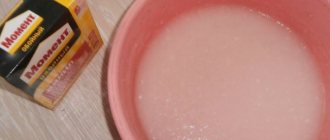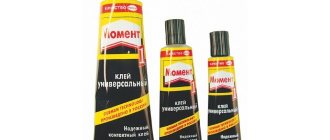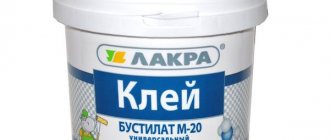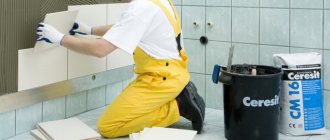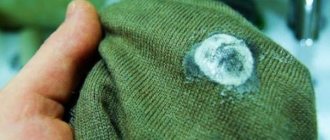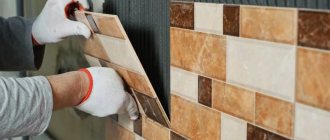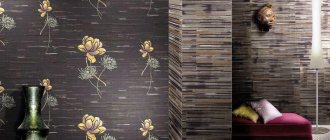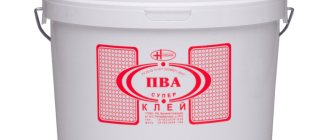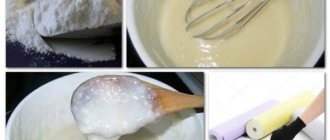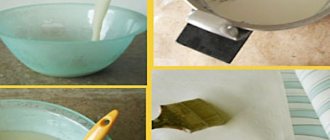Stickers with markings on glass glasses and ceramic plates, informational stickers on plastic containers, and children's stickers on everything, sound familiar? Such labels are usually quite difficult to peel off, and if they do, in their place there remain unpresentable spots of glue, onto which dirt subsequently sticks.
In this article we will look at how and how to remove sticker adhesive from various materials and surfaces: plastic, glass, dishes, furniture, metal, books and equipment.
How to remove glue after sticker?
There are many ways to remove the sticker: from folk remedies to special formulations. However, not all methods are suitable for some materials, so we recommend choosing a removal method based on the material of the product.
What are the main ways:
- Special sprays and liquids for removing stickers and labels.
- All kinds of solvents, alcohol-containing compounds, degreasers (WD-40).
- Vegetable oils.
- Soap solution, dishwashing detergent, detergents with citric acid.
- Baking soda (mix with detergent and water).
- Hair dryer, iron, dishwasher, hot water (heating method).
- Eraser (mechanical scraping).
- Citric acid, vinegar.
- Bitumen stain cleaners.
- Scotch tape / adhesive tape (mechanical method).
How to properly remove glue stains
In this matter, it is worth first of all starting from the nature of the surface being cleaned. Cleaning has its own nuances:
- Fabrics.
- Metal.
- Glass.
- Papers.
Next, we consider both folk remedies and the most effective methods using chemical and mechanical means.
Manufacturers and sellers need barcodes to enter a product code into the system, check product balances in the warehouse, and sell through an electronic cash register.
Each material has its own characteristics, but if you carefully follow the advice we offer, you can achieve an excellent result in all respects.
From clothes
As a rule, the paper backing from the surface of the clothing is removed quite easily, but to clean the glue, you will have to work a little.
The soaking method does not always help; manufacturers often use waterproof glue, which you can try to freeze.
The most commonly used methods for cleaning fabrics are:
- Iron.
- Hair dryer.
- Alcohol.
To remove the adhesive base using an iron, a thin lining fabric is required. We place it on the area to be treated and run a hot iron over it.
Note! It is recommended to increase the temperature of the sole gradually, starting with the lowest temperature, to prevent the glue from penetrating deep into the fabric.
In the case of a hair dryer, heat treatment is also used, but in a slightly different way. First, the surface with the remaining glue is heated until the moment when it is visually visible how the acrylic layer curls up. And then the residues are removed with a dry cloth.
When cleaning this way, it is important not to exert a strong impact on the fabric, otherwise you may not clean it, but rub the stain into the fabric even more.
This method can be used with natural materials such as cotton or linen. For synthetic fibers, silk and chiffon, heating is not used due to the risk of damaging the material.
Removing stains with alcohol must be combined with additional washing, since in most cases only visible stains can be completely removed. Glue residues may remain inside the fabric even when using a hair dryer or iron.
You can also try scrubbing the adhesive off the sticker with a clear alcohol solution to avoid leaving stains on the fabric.
Furniture
Furniture cleaning in most cases is carried out separately for each material that makes up this piece of furniture.
For example, an adhesive stain can capture both upholstery and some decorative elements made of wood, plastic, or glass. In this case, we first treat the surface that is most difficult to clean, in most cases it is fabric. And only then we move on to working with other surfaces.
It would seem that it would be easier to take a hard sponge or an old toothbrush and rub harder. But in this way there is a risk of damaging the surface of the object.
How to clean wood, glass surfaces and plastic from stickers without consequences is described below.
Plastic
Plastic is distributed almost everywhere, so sooner or later the question of how to remove glue from a sticker arises in almost every person. The easiest way to clean the plastic layer is with alcohol-containing liquids. However, before using any solution, it is recommended to first test it in an inconspicuous place on the material. This will ensure that the chosen solvent will not damage the surface.
You can try to rub the area from the label with a regular office eraser, but make sure that there are no traces of the eraser itself.
Note! Many solvents are aggressive to plastic and their use is not recommended.
Another way is to apply oil to the surface of the sticker to be removed. This method will work if there is a paper layer left that the oil can absorb. After waiting for some time, the unwanted sticker can be removed quite easily.
If the previous method did not help, try using regular vegetable oil.
When cleaning plastic, do not use aggressive materials - sandpaper, metal brushes and knives, spatulas. They can leave scratches on the surface that are impossible to get rid of at home.
Glass
Glass is one of the easiest materials in terms of cleaning from all kinds of stickers and stickers. All thanks to the high rigidity of the material, which ensures resistance to even the most aggressive influences.
Often it is enough to lubricate the sticker with vegetable oil and let it absorb. As a result, the label easily comes off the glass surface.
Therefore, when cleaning windows or dishes, you can even use metal knives and spatulas. The main thing is not to overdo it and not to push through the glass surface itself.
If you have alcohol or solvent on hand - great, use them. Found some old adhesive cleaning powder and it will do the job. There is nothing but a knife - and in this case the issue of removing the sticker can be solved.
Metal
Metal is a material as durable as glass. However, when working with it, you should not use materials that can damage the surface, primarily oxidize it, or change color upon contact with metal.
You should be careful, if the item is painted, the products can also erase the paint.
Therefore, the best solution would be to use oil or alcohol solutions. You can also use the mechanical method using spatulas and knives, not forgetting about safety precautions when carrying out such work.
Papers
Removing stickers from the surface of paper is one of the most difficult tasks. But with the right approach, you can solve the problem here too with excellent results.
After removing the sticker, any remaining adhesive can be carefully removed using adhesive tape.
The first option that immediately comes to mind is to erase with an eraser. Here you need to be careful, because you need to keep the surface of the material intact. First, the eraser should be tested for safety when used, for example, on a book, and if there is no negative impact on the paper, finish the job.
Another good recipe for removing stickers is tape. After wrapping it around your finger with the sticky side facing out, we glue it to the sticker, and then with a sharp movement we try to separate it from the surface of the paper. This method should also be pre-tested for reliability on a small area of the sticker.
If there is a risk of tearing the paper web, it is better to refuse to use it.
You can use a small scraper to remove the sticker and any remaining adhesive. It is recommended to pre-moisten its surface before doing this. For glossy surfaces, it is possible to use alcohols or oils, because their traces can then be easily removed.
How to remove glue from a sticker from plastic?
When removing a sticker from plastic, you need to be careful in choosing the method, since aggressive agents and solvents (alcohol, acetone, white-spirit, etc.) can negatively affect the color and surface of the product.
Detergents.
Experienced housewives mix a few drops of detergent with baking soda and a little water to form a paste. The resulting paste is applied for 10 minutes and then cleaned off with a sponge.
Using a hairdryer.
When heated, many adhesives lose their properties and become more plastic. You can also hold the sticker under running hot water.
Using solvents.
Alcohol, acetone and other solvents work well on the sticker itself, but they can damage the plastic, so it’s better to first apply a small amount of the substance to an inconspicuous area and watch the reaction. The same recommendations apply to table vinegar and WD-40 degreaser.
Mechanical method.
You can try to erase the sticker with a regular eraser. Traces that remain from the eraser itself can be removed using a soap solution. They can also be wiped off with a cloth or sponge, after wetting it with oil or soapy water.
Home Recipes
If you suddenly encounter the question of how to remove sticker adhesive from plastic or other surfaces, and there are no special means at hand, you can resort to traditional methods of removing stickiness.
Many of the listed methods work as effectively as professional formulations, so do not neglect them.
| 1 | Vegetable oil | More details |
| 2 | Alcohol products | More details |
| 3 | Masking tape | More details |
| 4 | Mechanical cleaning by hand | More details |
| 5 | Table vinegar | More details |
| 6 | Petrol | More details |
| 7 | Heat treatment with a hairdryer | More details |
| 8 | Wet wipes | More details |
| 9 | Acetone and hair dryer | More details |
| 10 | Melamine sponge | More details |
| 11 | Detergent | More details |
| 12 | Steam cleaning | More details |
| 13 | School eraser | More details |
| 14 | Lemon | More details |
1
Vegetable oil
In most cases, oil is used to remove stickiness after a label, since it quickly dissolves the glue, causing it to lose its properties.
However, before removing the sticker from the glass using oil, keep in mind that this method will only be effective when removing relatively fresh traces of glue. If you removed the sticker a long time ago, and the glue remaining on the surface has hardened and hardened well, it will be difficult to clean the sticky marks with oil.
You can use any oil (olive/vegetable/coconut, etc.) or fat in this method.
Most often, it is applied as follows:
- The sticker is generously wiped with oil using a cotton pad or brush. If possible, the sticky side of the sticker is processed if it can be peeled off a little around the edges.
- After 3-7 minutes, gently pull the sticker and remove it from the surface.
- If necessary, apply oil to the cleaned area and remove it with a lint-free wipe or cotton cloth.
2
Alcohol products
When processing plastic, glass, metal or unpainted (and unvarnished) wood, liquids with a high concentration of alcohol can be used. It also dissolves glue quite quickly.
There are no difficulties in using alcohol. It is only sprayed onto the sticker or sticky area and left for 2-3 minutes. After this, the label is pryed off with a sharp object and carefully removed along with the adhesive base.
If necessary, the cleaned area is wiped again with the same alcohol or liquid with a high concentration.
3
Masking tape
Masking tape is an effective means of removing fresh traces of glue and can be used on both sides:
- Sticky side. If the remaining glue is in a semi-liquid, viscous state, they can be removed by gluing a small piece of tape on top and sharply tearing it off. After a few pulls like this, you'll get rid of the stickiness.
- Matte side. The paper part of the tape is also suitable for final cleaning of the surface from the sticker. To do this, it is fixed on the sticky part and then abruptly torn off.
Important! Before you remove the sticky layer from the sticker with masking tape, make sure it is strong, otherwise it may tear and make the problem worse.
4
Mechanical cleaning by hand
When it comes to the question of how to remove glue from stickers from plastic or other surfaces, people still trust their own abilities most of all. Any sharp objects are used - nails, knives, various blades, sharp edges of credit cards, etc.
With a little effort, you can actually get rid of unwanted stickiness mechanically, but in this case there is a high probability of damage to the surface being cleaned. Be prepared for scuffs, scratches, chips and other defects.
Also, mechanical cleaning of adhesive stains often takes a lot of time and is not as effective.
5
Table vinegar
Vinegar, like alcohol, is quite effective in combating both fresh traces of glue and old, hardened ones.
Vinegar is applied to the problem area or the sticker itself for 7-10 minutes and then carefully removed.
Important! For such cleaning you need to use table vinegar.
More aggressive liquids can damage the surface being treated. 6
Petrol
Flammable liquids, including gasoline, also work well as solvents and cleaners. However, they should be used more carefully, as they can damage the surface being treated.
Gasoline should be applied to the sticker itself or the remaining glue after removing it for 2-3 minutes, and then removed with a dry cloth or cloth. It is not easy to remove old, frozen traces of glue in this way, so you will have to repeat the steps 2-4 times.
Before removing sticker adhesive from plastic with gasoline, test the method on an inconspicuous area of the material. This way you can avoid damage to the surface. Gasoline can be used on glass and metal without prior testing.
7
Heat treatment with a hairdryer
When exposed to high temperatures, the glue begins to melt and loses its properties. Thanks to this, heat treatment with hot water or a hairdryer will help quickly remove the unwanted sticker.
The method works quite quickly:
- Set the hair dryer: select medium air temperatures and low speed.
- Direct a stream of air at the sticker. Don't keep the hairdryer in one place or too close. Continue heat treatment for 15-20 seconds.
- Pry the edge of the label with something sharp and begin to pull it up, without using much force.
- When the sticker stops coming off the surface easily, repeat the steps with a hairdryer, directing warm air flows not only perpendicularly, but also parallel – under the label.
- After another 15-20 seconds, carefully remove the sticker.
This method is especially effective for removing old stickers, the glue behind which has long hardened and cannot be dissolved with various liquids.
The heat treatment must be repeated until the sticker itself comes away from the heated surface. Do not rush and tear it off mechanically, otherwise it will leave a sticky layer behind, which will be more difficult to remove.
8
Wet wipes
After removing fresh stickers, you can remove the stickiness using regular wet wipes. To do this, it is enough to make several circular movements until the remaining glue is removed from the surface.
use wet wipes as a complement to other, more aggressive methods than removing sticker adhesive from plastic.
9
Acetone and hair dryer
If you don’t know how to remove a sticker from glass, you can use this option. It is suitable for removing both fresh and old labels with a hardened adhesive base.
The essence of the method:
- Using a hair dryer set to warm air, heat the label for 20-25 seconds.
- Use a credit card, tweezers, a knife or other sharp objects to pry up the edge of the sticker and carefully remove it.
- Use a cotton pad soaked in acetone to wipe the area to be treated to remove stickiness.
- Wipe the glass with a damp and then dry cloth.
Be careful with acetone - there should not be too much of it, otherwise there is a possibility of streaks and smudges forming on the glass, which will be difficult to remove.
You can replace acetone with nail polish remover containing it.
10
Melamine sponge
A melamine sponge is an indispensable cleaning accessory that removes even the most difficult stains and stains. With it you can clean the glass from glue stains, avoiding streaks.
First, you need to wipe the glass with cool water, and then start rubbing the sticky area with a sponge. Take your time and continue making circular movements until the surface is completely clean.
11
Detergent
Dishwashing liquid or liquid laundry detergent will work if you don't know how to remove sticker adhesive from clothing, furniture, or other textiles.
The product works quite quickly:
- Wet the problem area with hot water.
- Apply a few drops of detergent to the sticky area and leave for 5-7 minutes.
- Rub the fabric gently. If there are traces of glue left on it, repeat the steps and leave the detergent on for 10-15 minutes.
- Wash the item.
12
Steam cleaning
As with heat treatment with an iron, steam cleaning involves removing sticky marks under the influence of high temperatures. However, in this case, the effect is also enhanced by increased humidity.
This method is suitable for processing small glasses that can be conveniently held upside down above the stove.
The essence of steam cleaning:
- Place a small saucepan or kettle on the stove and bring to a boil.
- When steam begins to come out abundantly from the spout of the kettle or pan, bring the glass to it and hold it for 15-25 seconds.
- While still hot, use a cotton cloth to wipe the sticky area.
- If the remaining glue is not completely removed, repeat the steps.
13
School eraser
The eraser will help you to remove the dirt after removing the bulk of the glue and stickiness.
After you have wet the affected area and rubbed it with a rough cloth, rub it for 20-30 seconds with an eraser until the surface is perfectly clean.
It is recommended to use hard erasers; they will help you quickly get rid of dirt from glue on metal, plastic or glass.
14
Lemon
The increased acid balance of citrus fruits makes them an alternative to chemical liquids and solvents. Lemon and lime are effective in removing stickiness and traces of even hardened glue.
Fruits are used as follows:
- Roll the lemon on the table a little, pressing on it from above to soften it and make it juicier. After this, cut a small slice of the fruit.
- Squeeze some lemon juice onto the sticky area and leave it there.
- After 3-5 minutes, use a blade, knife or other sharp device to scrape off the label. If lemon is not available, you can replace it with a solution of citric acid, diluting a teaspoon in a small amount of water.
How to remove a label from glass?
Very often, stickers with markings and barcodes are glued to glass objects (glasses, vases, jars and other glassware). To ensure that important information is not lost during transportation or in the store, manufacturers use high-strength glue.
However, such a sticker or the glue left behind it greatly spoils the appearance of the glass product.
What can you do?
- Heating.
The adhesives used are often sensitive to high temperatures, so the label can be heated with a hair dryer or boiling water. If you have a dishwasher, you can wash the product together with the sticker in it; most likely it will come off along with the glue. Just make sure that the particular item is dishwasher safe, as crystal, for example, may darken. - Cleaners.
Cleaning products with citric acid are well suited; these are often used for washing windows, for washing dishes, and a solution of laundry soap. Such substances should be applied to the sticker and left for a few minutes, and then try to wipe it off with a sponge under running water. To enhance the effect, dishwashing detergent is often mixed with baking soda. - Vegetable oil.
The sticker needs to be soaked in any vegetable oil, and then picked up and removed from the surface. This method will only work for recently pasted stickers. Video instruction: - Professional means.
Construction stores sell numerous bitumen stain cleaners; they can easily deal with the problem, but have an unpleasant odor. There are also special sprays for removing labels, such as Label Off or Defender - sold in household and office supplies.
Important!
Glue from glass should absolutely not be scraped off with sharp objects.
Folk remedies for removing glue
In addition to the commonly used chemical compounds, there are also quite effective folk remedies for removing glue from stickers. We'll talk about the most popular of them below.
Baking soda
Baking soda will do a great job of removing stuck stickers if you don't have cleaning powder on hand. We wet the surface well, apply soda and begin to remove the dirt. Of course, this method is only suitable for materials such as glass or metal, because for plastic, paper and fabric, exposure to soda particles can have a negative impact on the integrity of the surface.
A paste solution of baking soda and warm water will help remove dried glue.
Vinegar
Vinegar is often used as an alternative to alcohol or solvent for removing grease stains. This solution does not cause any harm to the surface of the plastic, so it can be safely used to clean it.
Vinegar works great for removing sticky stains on glass or metal.
A better result can be achieved if it is possible to pre-soak the sticker for a while.
Note! When working with vinegar, you must comply with safety requirements - do not allow the solution to get into your eyes, work in a ventilated area.
Lemon acid
Citric acid can be used either from fresh lemons or in powder dissolved in water. It is recommended to pre-soak the sticker area and after dissolving the adhesive layer, removing the sticker will be quite easy.
Lemon juice contains acid that destroys glue.
There are cases when it is not possible to remove the stain the first time, in which case you can safely repeat the above procedure.
Vegetable oil
The oil will help deal with even old stains, especially if you use pre-soaking. Just 10 minutes is enough for the liquid to be absorbed into the remaining sticker. Then use a plastic scraper to remove the remaining sticker from the surface of the material being cleaned.
The fat base makes the glue more pliable and makes it easier to remove it from the surface.
It may happen that the first time not the entire adhesive layer comes off the surface being cleaned. In this case, the procedure can be repeated. If you can’t clean the glue the second time, you can combine oil cleaning with the use of more aggressive agents, for example, vinegar or alcohol.
Alcohol
Its properties resemble solvents. However, it acts more gently on the surface. When using this liquid, it is worth remembering that alcohol has high volatility, so leaving the sticker to soak does not make sense.
It will allow you to remove glue from any surface, even from soft types of things.
Apply alcohol to the surface for just a few seconds and begin removing the sticker. After the operation, you don’t even have to clean the sticker area additionally - once the alcohol evaporates, it doesn’t leave any traces behind.
Wet wipes
Everyday wet wipes are also a great way to remove glue and sticker residue. Moreover, they can be bought at almost every step.
To remove the sticker, you need to actively rub the surface with a napkin, applying slight pressure. When the top layer begins to separate, the applied force should be increased.
If the sticker mark is small, regular wet wipes will help.
Once the paper is completely removed, we continue to remove any remaining glue. It is not always possible to clean it with a napkin, so it is advisable to use more aggressive liquids in addition.
Acetone
It is highly accessible; this product can be purchased at any hardware or hardware store. It has fairly high cleaning properties, however, it is not recommended for use on plastic surfaces, as it can cause damage to the surface.
Use acetone to remove dried glue from hard surfaces and natural fabrics.
It makes sense to pre-treat the surface of the sticker and let it soak for 5-10 minutes. Then, using a scraper on the sticker, remove its remnants.
After using acetone, it is recommended to remove its residues with a soap solution.
Note! The vapors of this substance are toxic, so cleaning with its use is carried out only in well-ventilated areas.
Kerosene
Kerosene is a flammable liquid, so in order to avoid problems when using it, you must take precautions.
Kerosene is a universal chemical remedy for all types of glue.
It is recommended to let the kerosene soak into the surface, this way you can clean even old and difficult to remove stains.
Additionally, depending on the surface to be cleaned, you can use scrapers or sponges for washing dishes.
How to remove glue from labels on dishes?
The dishes are also often covered with labels, information leaflets, etc., especially if they are sold individually. It is better to get rid of such stickers immediately; the longer you use the product, the stronger the glue adheres to the surface.
- Acetone or table vinegar.
Moisten a cotton pad or any soft cloth with acetone, nail polish remover containing it or vinegar and gradually wipe off any remaining glue from the surface. - Heating.
Under the influence of a hairdryer or hot water, the glue will lose its properties and the sticker can be easily removed without leaving any traces. If the dishes can be washed in the dishwasher, then this option also works. - Oil.
The label can be soaked in vegetable oil. This option is not suitable for removing glue residue. - Special compounds.
Hardware stores sell label remover sprays or liquids (Label-Off, Defender). They effectively remove stickers from glass, porcelain, metal, cardboard, but can have a negative impact on plastic. - Cleaners.
Dishwashing detergents or cleaners with citric acid can cope with the problem if you apply them for a while and then wash them with a sponge under running warm water.
We do not recommend using chemical solvents such as white spirit for dishes, so that you do not have to get rid of the smell later.
Useful tips
- If the surface of the product has any texture that can be damaged by mechanical impact, then use one of the listed solutions to remove the adhesive from the sticker. Conversely, if the product may stain or lose color, then it is better not to use liquids, but to resort to mechanical cleaning methods.
- Instead of a cotton pad or paper towel, you can use an old toothbrush, if you have one.
- After using any solutions or mixtures, it is recommended to rinse the product very thoroughly. This especially applies to those products that require subsequent contact with food.
- After the glue has been removed, the surface of the object must be thoroughly dried. Then, over the course of several days, you will need to check the cleaned area for adhered dust. If the treated area quickly becomes dirty, this means that the adhesive layer has not been completely cleaned. This means that you need to repeat one of the selected methods again.
- Wear an apron and gloves while working, as some solutions may stain clothing and burn hands (e.g. vinegar).
Now, wondering: How to remove glue from a sticker from plastic?, you know what to do and can easily deal with the problem.
How to remove sticker from furniture?
In cases with furniture, it is better to remove the sticker immediately, then it will most likely easily come off the surface, you just need to moisten it with a soap solution.
For old, stubborn stickers, the following methods are suitable:
- Heating with a hairdryer.
Just do not overdo it, so as not to damage the varnished coating; it is better to heat the sticker longer, but at medium temperature. - Solvents and alcohol-containing products.
Well suited for unvarnished and unpainted surfaces. - Vegetable oil.
Apply a cloth soaked in oil to the sticker and let the oil soak in. Then carefully remove the label piece by piece.
Types of surfaces
It is necessary to use one or another method carefully, taking into account the type of plastic. Particular care should be taken when removing stains from low-quality plastic products, as they can be easily damaged.
Let's look at how to remove sticker adhesive from different plastic surfaces.
Made from low quality plastic
When choosing a glue remover, it is better to choose a baking soda paste or soap solution.
When using flammable mixtures and aggressive cleaning agents, it is recommended to keep them for a short time and with caution. They can easily damage the surface of the material.
When working with a colored surface, you also need to be as careful as possible. It is better to use a regular eraser so as not to damage the surface of the product. It is advisable to pre-moisten it in a soap solution.
From household appliances
Almost all modern equipment is sold with advertising stickers and decals. If in a store they are pleasing to the eye, then at home they are inappropriate. Some of them are easy to remove, while others leave traces of glue or cannot be removed at all. How to bring them together? A few simple tips:
- If the sticker was recently applied, you can try the mechanical method.
- If it was glued more than a year ago, it is better to use water or alcohol.
- Before carrying out the procedure, be sure to turn off the equipment from the power source!
- A damp, lint-free cloth can be used to remove glue from the plastic of a laptop or TV.
- It is recommended to start cleaning with the least aggressive method in order to reduce the likelihood of damage to the surface being cleaned.
- If simple methods do not help get rid of the sticker on household appliances, then it is recommended to use tape or medical alcohol.
- If none of the above methods helps, you need to loosen the glue with a hairdryer and heat for 30 seconds. You need to resort to this method extremely rarely!
From plastic windows
It is recommended to remove the protective film from new plastic windows immediately after installation. Most often, the coating can be torn off by sudden movements. If it was not possible to remove it in time, it is literally welded to the surface.
In addition to the protective film, you often have to remove stickers with the characteristics of the glass unit. If there are old stickers on plastic windows, it is recommended to remove them in the following ways:
- Mechanical.
- Using a hairdryer.
- An eraser.
- By professional means.
To achieve maximum effect, it is recommended to combine several methods, for example, mechanical and thermal. It is important to carry out the work carefully so as not to damage the frames or scratch the glass.
From plastic dishes
To remove stickiness from glue and the sticker itself from dishes, it is not recommended to use chemicals. The most popular methods:
- A soap solution allows you to get rid of the sticky layer on plastic dishes.
- Medical alcohol will allow you to remove the sticker from the bottle.
- To remove stains from plastic dishes, it is better to use folk remedies: lemon, oil, soda.
- For the most difficult to reach stains, heat treatment is suitable.
How to remove a sticker from a book?
Stores often paste price tags and barcodes onto the covers of books and magazines, which spoil the appearance. You can remove an unnecessary label by carefully picking up the tip or gluing tape on top and sharply tearing it off (not suitable for paper). Heating and special products, such as Label Off or Defender, which are sold in office supply and hardware stores, also work.
